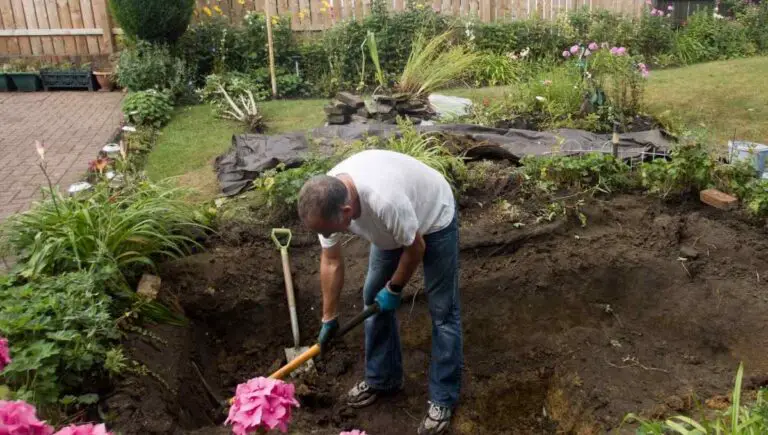Can a Utility Company Force an Easement? (Protect Yourself)

Easements are an important aspect of property ownership, as they allow utility companies to access a piece of land for the purpose of installing and maintaining their infrastructure. But what happens when a utility company needs to access your property, and you don’t agree to the terms of the easement? Can they force one?
In most cases, a utility company cannot force an easement. Instead, the company must negotiate with the property owner and come to an agreement about the terms of the easement. However, refusal to grant an easement could result in legal action if it denies the public a utility service such as cable TV.
It’s vital that you know your landowner rights when it comes to easement cases. If there is no other option, an easement can be forced on you, although it would be to benefit the public. This article will look at the basics of understanding an easement.
Here’s a Quick Pro Tip!
If you’re weary about utility workers or anyone else accessing your property without an appropriate easement, the first step is to gather evidence. The best type of evidence is surveillance videos.
Our favorite CCTV cameras from Amazon
1. 120ft Zosi 1080p CCTV– A great surveillance camera with night mode and a 105º view angle.
2. Zosi CCTV security system – Ideal for surveillance from multiple angles.
3. Ring floodlight & security camera– The camera can stream live to your phone, and you have a two-way radio.
Easements and Their Creation
An easement is actually easier to understand than you might think. It might sound extremely complicated, but in reality, it is simple. In this section, we’ll define this legal agreement in simple terms.
How Do Easements Work?
An easement allows other parties the right to use your legal property. Different types of easements can be used in different scenarios and given to any private parties or government agencies.
Easements are usually recorded and attached to the deed for the property, but you can also enquire about possible easements on your land at the County Clerk’s office. Usually, easements are created by law, and you cannot interfere.
What Type of Easement Is Commonly Used by Utility Companies?
Utility companies usually use a utility easement, allowing them access to run their pipes and lines under private properties. These easements are quite popular and can be checked with your utility company.
Utility companies usually negotiate an easement with a landowner; in most cases, these easements last a very long time. Utility services are used in almost every house across the states, so many utility easements are being used daily.
What Is an Easement in Simple Terms?
An easement is a legal document that allows a party to use a portion of another person’s land. The landowner still holds the title and the deed to the property, but a portion of the land can be used by someone else.
An easement does not allow someone else to do whatever they please. It’s only given for specific circumstances. For example, if your neighbor has to drive across your property to reach their own, they would receive an easement to drive on your property, nothing more.
Do Easements Run With the Land?
Not all easements run with the land, but most do, especially commercial easements like utility easements. This is also known as an easement appurtenant which means that when the property is transferred (sold or bought), the easement comes with the deed.
Personal easements or private easements are not transferable and are void once the land is sold. These easements are usually given between two private parties, like the landowner and their neighbor.
How Many Ways Can an Easement Be Created?
An easement can be created in several ways; implication, necessity, prescription, express grant/reservation, or estoppel. Each of these easements is based on different circumstances and has its own conditions.
Easements are usually transferrable and get passed down to each new landowner every time the property transfers. Although, in the case of necessity easements, they can be terminated once they are no longer necessary.
Landowners Rights
It might seem like an easement can be sprung on you at any point, and you’ll have no say. However, that is not the case. In this section, we’ll look at the rights you, as a landowner, have on your property.
You might also enjoy our post on How You Can Remove An Easement From Your Property
What Are Easement Rights?
An easement gives other people or parties the right to access and/or use a portion of your land. Easements are only given for specific, limited circumstances and purposes.
There are many types of easement, the most popular probably being a utility easement – which allows utility companies to run their pipes and lines underneath your property. This also allows them access to your land if their lines need maintenance.
Can the Electric Company Enter Your Property?
If the electric company has a utility easement for your property, they are allowed to enter it. Although, they would only be allowed access to certain parts of the property that houses their equipment.
An electric company would not be able to enter your house without your agreement with a utility easement. If they need to repair a part of a line that is underneath your property, they are allowed to enter your yard.
What Are the Most Common Easements?
The most common type of easement is an easement in gross, a wide umbrella covering a variety of easements. Utility easements are the most popular under this category since it allows utility companies to run their lines or pipes under or on your property.
Typically a gross easement does not transfer with the property, meaning when the property is sold or bought, the easement falls void. However, in cases like utility easements, the easement is usually indefinite.
What Are the Different Types of Easement Exemptions?
There are many different types of easements, but there are three basic categories. Easement appurtenant, easement by necessity, and easement in gross. All easements usually fall into one of these three categories.
An easement appurtenant usually involves two neighboring properties, and the easement typically transfers with the deed. An easement by necessity is exactly what it says. If your neighbor needs to cross your property to get to theirs, it will fall into this type of easement.
An easement in gross is more common and typically does not transfer with the property. If you have a specific arrangement with your neighbor, it’s not to say that the property’s new owners are obligated to maintain the arrangement.
Different Easement Types
An easement is an umbrella term, as there are many different categories and types of easement in the United States. Let’s look at what easement you are most likely to be exposed to as a landowner.
What Is a Negative Easement?
A negative easement prohibits a landowner of the Servient Estate (the other property) from doing something specific. It does not give anyone the right to access the Servient Estate, but it can restrict certain things.
An example of a negative easement is when one neighbor has a lake view and prohibits the neighboring property from blocking the view – essentially prohibiting a tall building. Negative easements are not very popular in courts since they tend to clash with typical American ideals of privately owned land.
You might also enjoy our post on Whether a Utility Pole Can Be Moved
What Are Rolling Easements?
Rolling easements are documents (called primers) that ensure wetlands and beaches can migrate inland. This is built on the premise that eventually, the land must give way to the rising sea, so naturally, beaches and wetlands would move inward.
According to the EPA, rolling easements are implemented to protect the eroding beaches and rising sea levels. Many coastal cities have roads parallel to the shore, however, if the sea level rises to a certain point, the local government should allow the sea to reclaim it and build another road further inland.
What Is an Example of Easement by Necessity?
An example of an easement by necessity is if a piece of land cannot be accessed directly, an easement by necessity would allow you to walk or drive over a neighboring property to get to your own.
An easement by necessity usually is transferable, meaning it gets passed down to the new landowner once the property is sold. An implied easement, by necessity, means that it is not written down but is an agreement between the landowners.
What Is an Easement by Implication?
An easement by implication, means that there is no actual legal document, but the specific circumstances show that an easement was intended. This usually is a spoken or unspoken agreement between landowners or tenants.
For example, I own a big piece of land, break it into parcels, and sell one side of the property. You buy the other piece, but only your piece has access to the public road. We agree that I am allowed to use the driveway that runs through your land to reach the public road or my house.
Other Legalities
This section will focus on other legal matters relating to easements and management. Although these are only general answers, to get specific and detailed answers, you would need to contact a lawyer in your state.
What Terminates an Easement?
There are a few different reasons for terminating an easement between two parties. The most popular being an end of necessity, meaning the easement by necessity is no longer needed.
Another popular reason for termination is when the Dominant Estate merges with the Servient Estate, meaning the same person owns both pieces of land. The Dominant Estate can also agree in writing to terminate the easement with the Servient Estate without merging the properties.
Who Can Impose an Easement?
Usually, an easement is an agreement between two parties. However, a utility company can impose an easement on accessing your property for their lines. These easements are transferable with the ownership.
If it is an easement by necessity, any of your neighbors can require an easement. However, there would need to be sufficient evidence given to the court before an easement is given.
Is an Easement Legally Binding?
An easement is a legally binding agreement (written or not) that gives a party access to another individual’s property for a specific use. These could be between privately owned landlords or an external company.
Utility easements are some of the most popular since utility lines and pipes run under or over many homes. A legally binding agreement has the support of the law and can be used in a court of law.
How Do You Prove an Easement Is Right?
If the easement in question has been written down and signed by both parties, it would be very easy to prove that it is correct in court. However, it’s somewhat different with a non-written easement.
If you agreed with your neighbor but did not draft a legal document, it might not be easy to prove that it is right. You would probably need to prove that it is an easement by necessity, meaning this specific circumstance is necessary for you to use/reach your land.
Do Easements Need to Be Registered?
Not all easements need to be registered. It can be written and filed at your local County Clerk’s office, or it can even not be written down at all. This is known as an implied easement.
Each state has different laws regarding easements, so if you’re planning on requiring one, it would be best to consult with a local real estate lawyer. Alternatively, you could contact the County Clerk and ask for their advice regarding registering an easement.
What Is a General Easement Clause?
When a property is being sold, the legal documents would have an easement clause. This is where the landowner is required to mention all easements attached to the property, written or implied.
All necessary easements and utility easements are usually mentioned here. If the owner has an implied easement with their neighbor, they might also mention it in this clause. The new owner of the property would allow the easements to remain in place.
You might also enjoy our post on Whether a Utility Company Can Come Onto Your Property
Related Questions
How Close to an Easement Can You Build a Pool?
Usually, there is no distance requirement for an easement. You can build a pool right next to the easement, in most states. However, to be on the safe side, you should check with your local municipal building.
If you are planning on building a pool next to a utility easement that has underground pipes or lines, it might be best to contact the utility company and get an accurate indication of where the lines are exactly.
What Is Another Common Name for an Easement?
An easement is also sometimes referred to as a ‘means of access’, ‘legal right’, or a simple agreement. Although, in all legal documents, it would be referred to as an easement.
A ‘right of way’ means that your neighbor has the right to drive over your property to reach their own, or any similar situation. An agreement could be verbal or written, it would still be held as evidence in a court of law.
How Wide Is a Typical Easement?
The size of an easement differs depending on the type of easement. An easement that allows a neighbor to use your driveway is usually only 30 feet, which means they are only allowed on that specific portion of your land.
Utility easements are usually 10 feet, although they might need more, depending on the area and the utility service. Contact your local County Clerk’s office to find the exact measurements of an easement.
Final Thoughts
In short, a utility company cannot outright force an easement on you. However, if the easement has been passed down from the previous landowner, it would be pretty difficult to terminate the easement.










